
Is this how you build your stock portfolio?
Blindfolded and without caring about market fundamentals?
Or do you buy any random stock simply because it is trending?
If yes, then you are a gambler… not an investor.
One can select and invest a stock that is in the news. No doubt. But that is what a gambler would probably do.
Buying what seems fancy is not investing but gambling. When you rely on gambling to build wealth, you will need lots of luck to achieve your goals.
But if you take the high road to invest responsibly, you will be better off than any other gambler. Anyone who is thinking of investing in the stock market must know how to build a stock portfolio.
Today, we will lay down how one can build a stock portfolio from scratch. But I’ll be honest with you…Building a stock portfolio on your own requires a lot of time, patience, and energy. And I’m sure you are already overburdened with your responsibilities.
So, I will also share a shortcut on how you can skip all this hard work and invest in the best stocks in less than 5 minutes.
Can’t wait? Here’s a glimpse of what’s on offer.
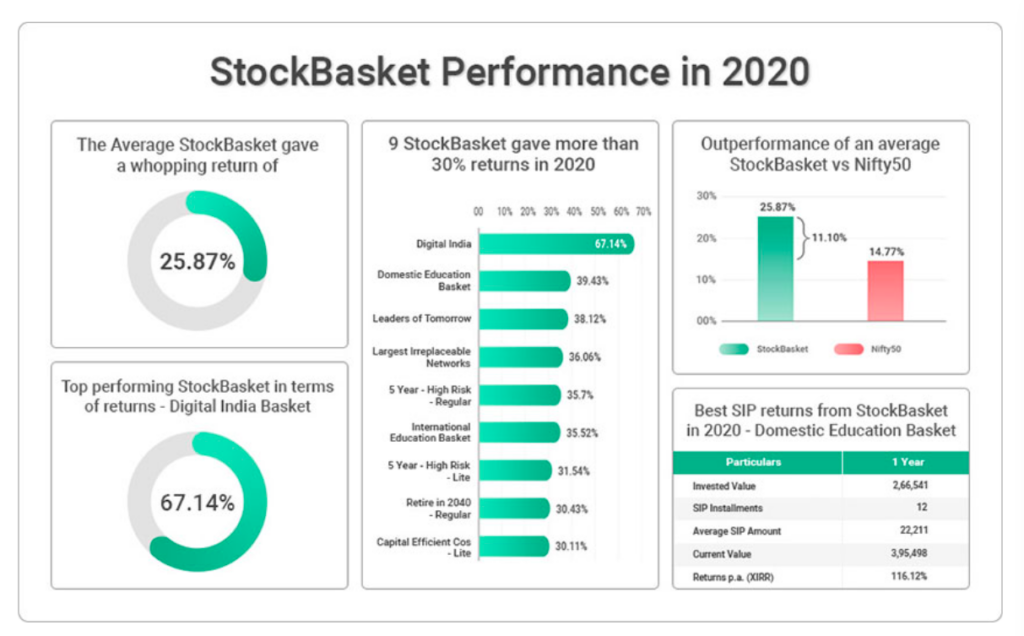
When pandemic hit the world in 2020 and investors started panicking StockBasket stood tall. Nine StockBaskets gave more than 30% returns in 2020 to their investors.
Infact, our top preforming basket – Digital India Basket gave a whopping return of 67.14% to its investors.
The best part being, the investors never worried about anything. Their entire stock portfolio was monitored and taken care of by our experts.
We are going to tell you everything about how to get benefit of these expert curated stock portfolios in this article. It will save your time, energy and generate better returns. However, let’s have a look into how an investor can create a stock portfolio himself first.
In this article we cover:
- What is a portfolio?
- What is a stock portfolio?
- How to build a well-diversified stock portfolio?
- How to select shares for stock portfolio?
- How to save time and energy while building stock portfolio?
Let’s begin!
Selecting a good share to invest in can be overwhelming for new investors. Whether you start with Rs 1 Lakh or a crore, having a well-built stock portfolio is always advisable. It is the first step of becoming a successful investor.
What is a portfolio?
A portfolio is a collection of a range of assets that are owned by an investor. It includes equity, gold, bonds, mutual funds, cryptocurrencies, derivatives, etc.
We invest in such assets to generate returns. Our aim should be to build a portfolio that matches our investment goals and risk capacity.
Building and maintaining a portfolio involves:
- Selecting assets appropriate to your needs
- Deciding which assets and how much of each asset to buy
- Monitoring and rebalancing portfolios at set intervals
Amongst all the asset classes available for an investor, equity covers a very large area. They are the most popular investment option. Within equity itself, an investor can diversify and build a well-balanced stock portfolio.
What is a stock portfolio?
A stock portfolio is a collection of stocks you invest in across sectors and industries.
Stocks refer to the shares of a company. They are considered to be the best reward-generating component of an investment portfolio.
By investing in shares, you can -
- Buy and hold stocks for short, medium, and/ or long term. In fact, you can create a mix of all these three and change the proportion whenever you wish to.
- Invest across sectors and industries like banking, pharma, auto, metal industry, etc.
- Beat economic circumstances by investing in evergreen industries
- Choose investment in developing, emerging, or developed economies
- Easily invest and keep a track of your investments
Like any investment, investing in equity involves risk. But the trick is to build a stock portfolio which is well-diversified. Such stock portfolios will continue performing better even during recessions.
How to build a well-diversified stock portfolio?
We do this by making a few basic but important decisions. Let’s begin!
The question you need to ask is, what do you want from your stock portfolio?
The two common options are -
1.Investing for (immediate) income
The older you get, the more likely you are to select this option. If you are investing to generate income immediately, invest in well-established companies.
Your goal must be to invest in shares that yield higher returns than inflation. Especially the ones who pay regular dividends.
Dividend paying stocks is a good source of passive income.
However, it is not advised to invest in any random company just because they pay dividend.
Remember, paying dividend is not an obligation. You need to examine various fundamental aspects before investing in stocks.
Thankfully, you don't have to analyse each and every dividend paying stock. Investment is not as complicated as it used to be. There are various products which can help you ease this process.
For example, you can invest a portion of your savings in the Dividend Champions Basket. With the help of this basket, you can invest in the best dividend paying stocks in India. Dividend Champion Basket has given a whopping 42.36% return between July 2020 - 21.
2.Investing to build wealth in the future
Young investors with a steady salary prefer this option while investing. The plan is to invest today to build heaps of wealth for tomorrow with the help of compounding.
These investors can follow value investing strategy to pick undervalued quality shares. This strategy helps investors reap high returns in the future.
Warren Buffett once said –
‘Opportunities come infrequently. When it rains gold, put out the bucket, not the thimble.’
Value investing is not an easy task. It requires nerves of steel to execute and stick to the strategy. StockBasket offers Value Buy 2020 Basket with top value stocks to let you take advantage of this strategy. Our experts saves you from the trouble of the endless stock selection process and monitors your stock portfolio.
Are you excited to know more about it?
Hold on…have covered everything in detail later in this article.
Once you figure out your investment style, your next step is to ensure that your stock portfolio is diversified. This is the most important step in building a stock portfolio.
The art of diversification:
You must diversify across different sectors and industries. Further, diversify your stock portfolio across large-cap, mid-cap, and small-cap stocks. The final decision depends on your needs and risk-taking appetite.
Benjamin Graham talks about diversification in his book, The Intelligent Investor. He suggests that one can build a perfectly diversified stock portfolio with 10 to 30 stocks.
According to probability theory, we reduce the chances of loss due to price volatility if we invest across sectors with low correlation.
But, you must not under diversify or over diversify your stock portfolio.
Under diversified means not owning stocks of different sectors. For example, you might be invested in auto-sector companies only.
Such stock portfolios carry more risk. This is because, if the auto sector starts performing poorly, it will adversely affect your entire portfolio.
Over diversification means owning an excessive number of stocks in your portfolio. In this case, even if few companies perform well, the overall returns will be low. This will have no major impact on your portfolio.
Peter Lynch described it as diworsification in his book One Up On The Wall Street. It means inefficient diversification.He suggests that if you are planning to buy and invest in 50 stocks, then it is better to invest in mutual funds.
We now come down to our next question.
How to select shares for your stock portfolio?
Selecting shares is not guesswork. Before you buy a stock, you need to thoroughly research the company and its peers.
There are two research approaches on how you can select shares for your stock portfolio:
- Top-down approach
- Bottom-up approach
Let’s understand them in brief -
1. Top-down approach
With a top-down approach, you start with the broader area and work it down to a specific company.
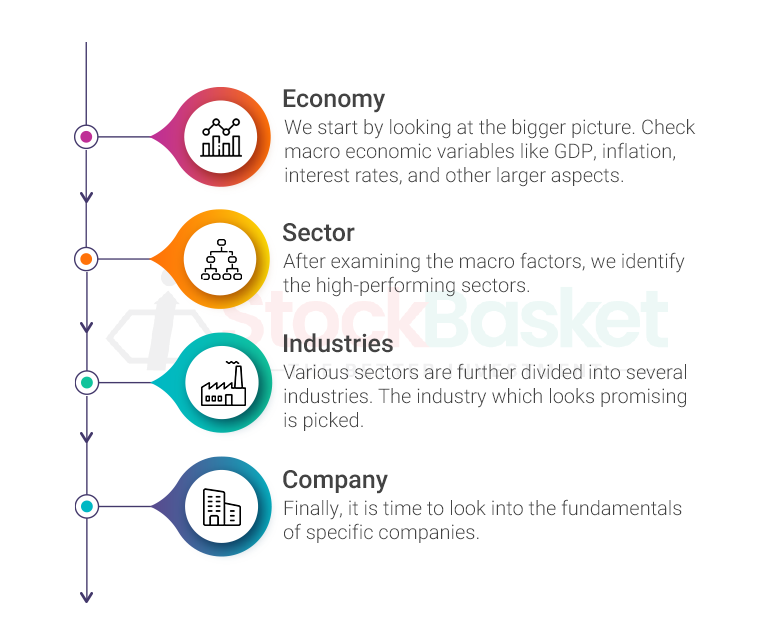
Let's understand how to select the sector and industry with the help of an example.
Say the pandemic-hit economy is recovering after the crash. Which sector is going to see a recovery and boom?
Say, for example, people will want to start and work on their own business due to job uncertainties. Many companies have now started outsourcing freelancing contracts.
The new start-up team will inevitably be in need of loans. For the same, entrepreneurs will reach out to banks to meet their capital needs.
There are private sector banks and public sector banks in India. When banks lend funds, they earn interest payments in return. This is their primary revenue operation.
Now that we are thinking about the banking sector, our next step will be to analyse the sub-sectors. That is, public banks and private banks. Now, your job is to short list the promising stocks and analyse their fundamentals.
Let’s have a look at another example - Fast-moving consumer goods (FMCG) sector.
FMCG is one of the few sectors which was not affected by the pandemic. Our lives depend on these FMCG products. One might find investing in the FMCG sector a good investing idea. But are you aware of FMCG's sub-sector?
There are four main sub sectors to FMCG sector.
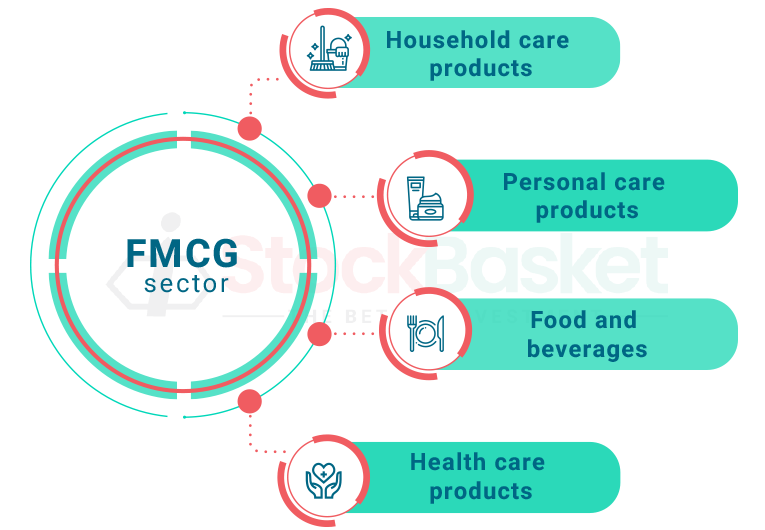
Companies provide the revenue breakdown in their annual report’s notes to accounts. For example, ITC Ltd. has flourished in the Indian markets for over 110 years. Here is their revenue bifurcation –
Source: ITC Ltd. Annual Report 2020-21
When you analyse such breakdowns, you realise that over 43% of ITC Ltd.‘s revenue come from cigarettes, that is tobacco products.
One major advantage of the top-down approach is that you can discard an entire sector if its future prospects don’t look promising.
2. Bottom-up approach
Bottom-up investing approach is the opposite to the top-down approach. Here, investors look at the microeconomic factors that can affect the companies that they are analysing. Here, the research begins at the company level.
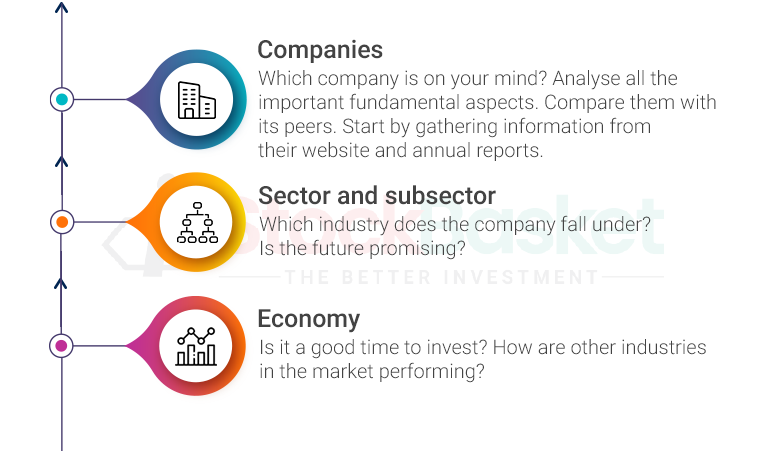
With bottom-up approach, you first check is the if the business looks sound and perfect. If you are satisfied with the fundamentals, only then you carry on with the analysis. In other words, you find reasons and cross check if you have a worthy reason to invest in a company.
To sum it, the top-down approach goes from the general to the specific. Whereas, the bottom-up approach starts at specific and moves to the general.
You can use both these approaches for building your stock portfolio. If a particular stock comes to your attention, conduct a bottom-up analysis. And if nothing strikes your mind and you have funds to invest, go for the top-down approach. Start with a wider picture and see where your analysis leads you.
Technical and Fundamental analysis
In the above two approaches, one important step is to analyse the company's financial health. There are two ways you can evaluate a company -
1.Fundamental Analysis
Fundamental analysis (FA) is widely used by investors. People generally use it for long-term investments. In fundamental research, emphasis is on the value of the stock rather than price.
You must analyse every aspect of the company to determine their value. It pertains to evaluating publicly available information about a company.
Benjamin Graham laid the foundation of Fundamental Analysis. In his book Security Analysis, Graham covered the fundamental aspects in great depth.
Here’s a quick overview on how to analyse companies to build a stock portfolio -
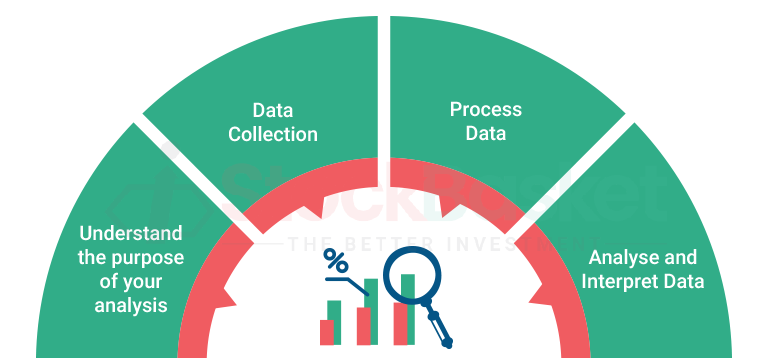
You can read our article on how to analyse a company fundamentally if you wish to know more about the process. But like I said earlier we will show you a much easier way to build a stock portfolio in a while. Stay tuned…
2.Technical Analysis
Technical analysis (TA) is widely used by traders. Here, more emphasis is on the price of the stock. One determines the future trend by monitoring the past and current trends.
The basic difference between the two is that fundamental analysis tries to find reasons for the movement in a stock. Based on the reasons, it predicts the price movements.
Whereas technical analysis is not concerned with the reasons. It believes that the way a stock price moves currently tells you where it is heading in the future.
You can check out our playlist on Technical Analysis here.
How to save time and energy while building stock portfolio?
Now that you know what goes behind the scenes of building a stock portfolio, the next question is –
Do you have the time, energy and resources to follow all the above-mentioned steps? Think about it…can you conduct top down or bottom-up analysis yourself?
You might have heard the saying, ‘Jack of all trades, master of none’. Building a stock portfolio is not a cake walk. You need to study the fundamentals and the technical aspects of the company as well as the economy. This is exactly where we come in.
StockBasket is your answer to creating stock portfolios with ease.
Our aim from day one has been to ensure that our readers invest with ease. So, to save you from trouble, we take up the responsibility to build and monitor stock portfolios for you. We at StockBasket, provide expert curated stock portfolios for varied financial needs. It is exclusively available for Samco customers.
Explore stock baskets based on your investment needs. Each basket is carefully designed by experts to achieve a financial goal. These baskets are monitored and stocks are added or deleted from time to time.
For example, if you think the pandemic has been a boon for IT sector. Then what do you do? How do you capitalise on this opportunity? You do not have the expertise to conduct top down or bottom-up analysis. Time is running out.
The simplest and quickest solution is StockBasket’s Digital India basket. With StockBasket, you can invest in companies which leads the country s growth and continue to generate superior long term returns for its shareholders.
The Digital India Basket generated a one year return of whopping 84.99% (13th August 2020 as of 13th August 2021). Imagine what would happen if you let this investment compound? By investing in this basket, you can benefit as India is on a path to becoming US $5 trillion economy.Like Digital India basket, StockBasket has curated various baskets each with a unique theme. Here is a quick historic comparison of an average StockBasket and Nifty Returns.

Impressed? We thought so. What the next step? Simply open a FREE Demat account with Samco and get free access to StockBasket!






Leave A Comment?